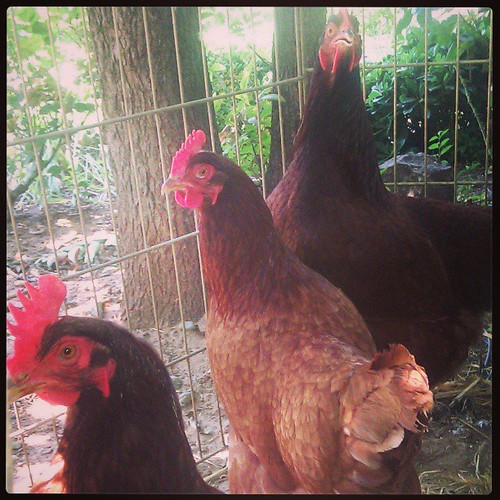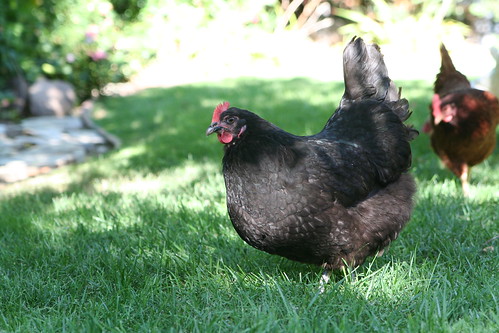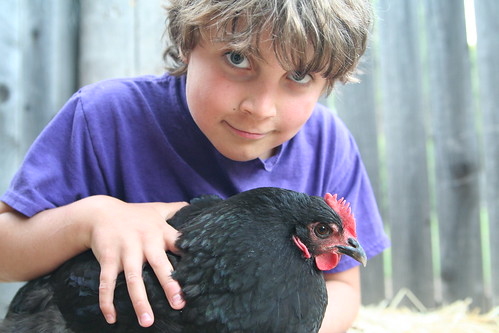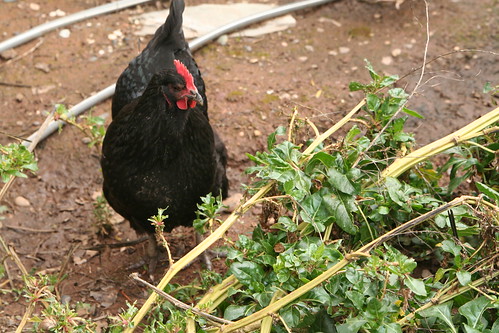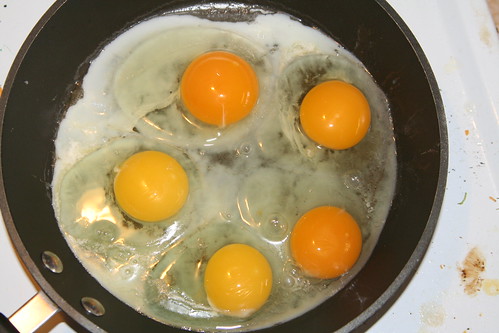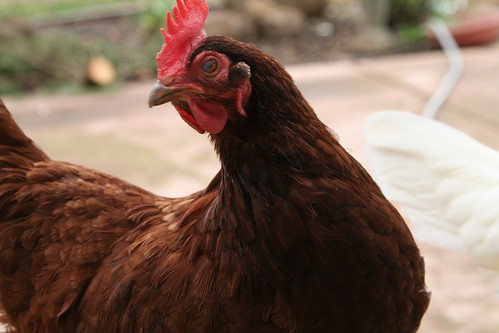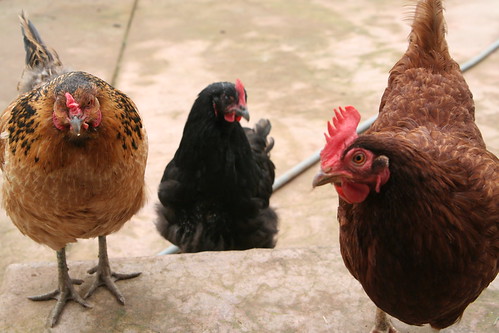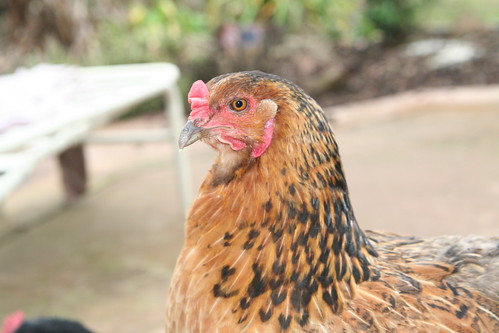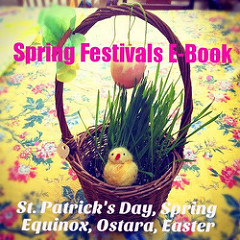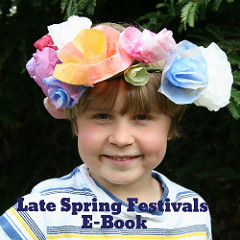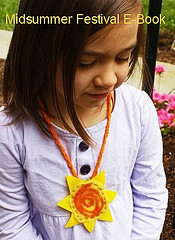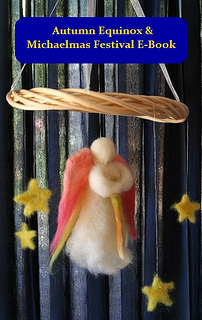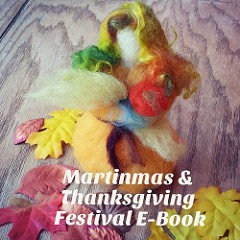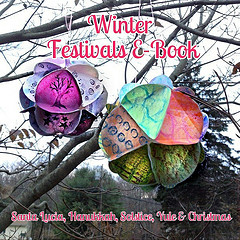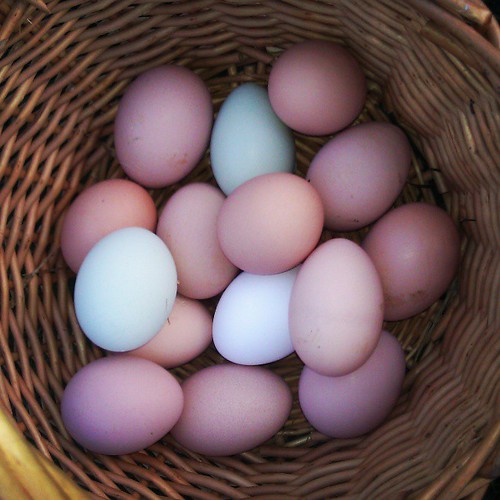
I get it now. Although I’ve always loved Easter and the springtime, I think I really get it now. I’ve studied Christianity and the goddesses of world religions and I’ve done my share of pagan festivals. The rites of spring have always been glorious and inspiring.
But I really get it now. The miracle of eggs.
I keep hens, and I currently have 15 beauties in my backyard. They range in age from 5+ to 1 year old. All are mature enough to lay and their eggs are delicious.
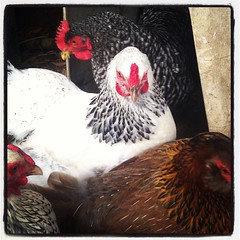
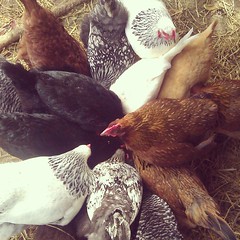
In the wintertime, the hens stop laying, or slow down to an unbearable trickle. They slow down so much that it’s frustrating to be feeding them all winter long and getting so little—especially when the chicken run gets cold and sloppy with mud and manure and I have to tromp out there daily to make sure they get fed and watered, and to collect my rare, occasional egg. In the wintertime, I buy eggs at the supermarket and I buy feed for my chickens.
As February arrives, the hens start laying a little more. Some days I get two or three eggs. Some days it’s back to one.
It’s March now. It’s the Spring Equinox and the girls have fully ramped up. In the last 24 hours I’ve collected 15 rainbow-hued eggs. Just in time for Ostara. Just in time for Easter egg rituals and children’s hunts. Just in time for the eggs to take their exalted place in our cultural observances for one day.
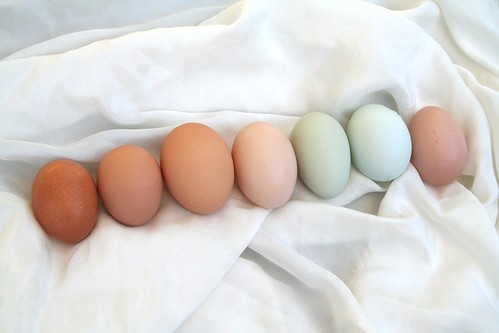
So let’s look at that a moment. All winter long, if we were subsistence farmers, we would be eating mostly last year’s food—stored or preserved food. When it comes to protein, that means either a winter slaughter or dehydrated, salted, or frozen protein. What if we, like previous generations, didn’t have freezer technology? That leaves us with the risky expenditure of energy on hunting for fresh meat, dehydrated or salted protein, or the sacrifice of a valuable animal.
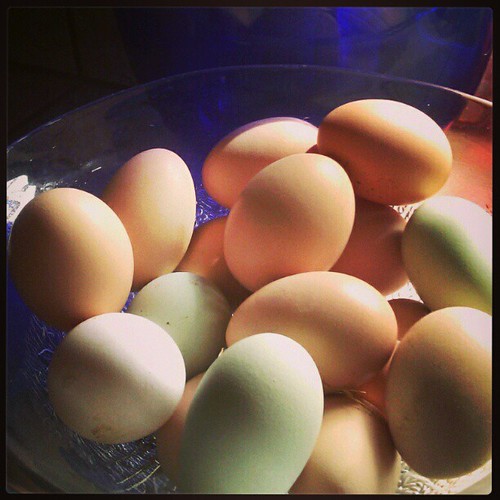
But with the coming of the springtime, the eggs return. The flow of fresh, nutritious protein begins again. Bellies get full. Muscles get stronger. People can return to the hard work of living because they’ve got the fuel to do so, and it comes in safety-sealed, perfectly portion-controled little packages— boxes without hinges, key, or lid, yet golden treasure inside is hid.
And so the egg is naturally the symbol of renewal, of hope, of plenty. Chicks hatch from some, and that’s delightful because they are cute and fluffy (and because when they fall asleep they instantly flop over and doze, awkwardly and ridiculously, however and wherever they fall). But really, baby chicks mean more eggs will come.
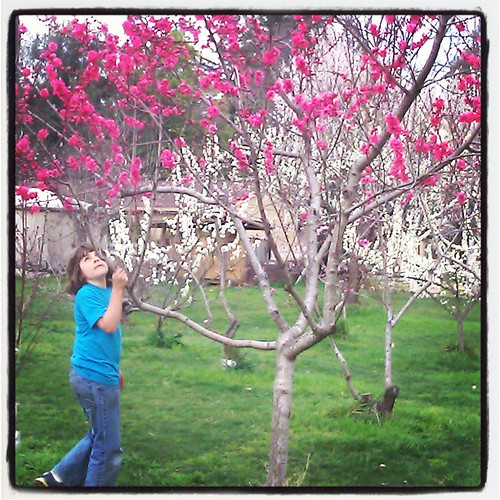
Eggs aren’t the only symbol of springtime renewal, of course. And we honor them all: workable earth, seeds for planting, tender sprouts, fresh edible greens growing where there had been snow. Flowers mean bees and bees mean fruits. Pregnant livestock give birth. Milk and honey flow.
All of these are longed-for signs that life will continue, that mothers and fathers can feed their babes.
Happy Ostara!
